Such images exploit the use of patterns and colors. They arrest the eye and invite the viewer to explore the image for its own sake. [Note: ExpertPhotography is supported by readers. Product links on ExpertPhotography are referral links. If you use one of these and buy something, we make a little bit of money. Need more info? See how it all works here.]
What Is Abstract Macro Photography?
Occasionally, you’ll hear the term ‘abstract‘ applied to a photo that’s turned out very badly. But for the most part, photographers deliberately shoot abstracts. You can, of course, create an abstract image entirely on your computer. All you need for this is a creative software like Photoshop. But starting from a blank canvas can be difficult unless you receive a spark of inspiration. For this reason, it’s often helpful to begin with a real-world subject. And then photograph it in an unusual way. You can find inspiration for abstract photos almost anywhere. You can, for example, find repeating patterns and colors in large man-made structures. But many smaller-scale objects can also provide a wealth of intricate shapes and textures. For many of us, these are less familiar and therefore, more ‘abstract’.
How to Shoot Macro for Incredible Results
Most people are not in the habit of closely examining objects with a magnifying glass. Therefore, close-up photographs of everyday objects can easily create interesting abstract compositions. The trick is to get close enough to the subject. Make its image on the sensor big enough to be useful. Let’s say you try to move in close to a small subject using a standard lens. You’ll find that as you get closer, you’ll reach a point where you’re no longer able to focus on the subject. If you want a sharply focused image as the basis of your abstract composition, this would be a problem. Except, this time, we are trying to create abstract results. So it’s worth trying to photograph some objects up-close without worrying about the lack of focus. This can generate some abstract images whose nebulous forms emphasize the subject’s colors. Remember to set your lens to manual focus. Your camera might otherwise refuse to take the photo on account of it being unable to achieve focus. To see both color and texture, you will need to be able to reach much closer to the subject. This is closer than the normal minimum focusing distance. But don’t worry, there are several ways to do this. Some techniques are outlined in our article on macro, micro, and close-up photography. But out of the various methods available, the use of a dedicated macro lens gives the best results. And the addition of extension tubes will increase the available magnification even further. Here’s a shot of the previously out-of-focus subject. This time, I used a relatively inexpensive EF-S 60mm USM f/2.8 macro lens with a Canon 50D. At about the same distance, the intricate form of its crystalline structure can be fully appreciated. The photo above is an image of the chemical element bismuth. It’s a heavy metal with a low melting point. Bismuth can easily be crystallized to produce some fascinating terraces of iridescent color. Bismuth crystals are easy to photograph as they are quite large. This sample is, in reality, about one inch across. You don’t need a high magnification or a complicated lighting setup. You can easily find bismuth online or at any gem and mineral show. Many minerals exhibit different patterns and colors depending on the angle of the illumination. Here are two images of labradorite. The first is lit from behind using an LED light panel. The second from the front using an LED ring light. The following image is from a specimen of polished Labradorite. It’s lit with a simple LED light, hand-held to achieve a burst of iridescence at the critical angle.
More Abstract Macro Photography Ideas
Not everyone has a lump of bismuth or a piece of labradorite on their mantlepiece. But there are plenty of household objects you can use to make colorful macro images. The colors we’ve seen so far are not generated by dyes or pigments. They come from oxide layers that have a similar thickness to the wavelength of visible light. This creates an interference effect that selects vivid spectral colors from the white light. It’s what creates the colors in a butterfly wing for example.
Recycle an Old CD for Awesome Effects
The microscopic pits on a CD are also comparable in size to the wavelength of visible light. This makes it another source of abstract spectral color. All you need besides your camera is a tripod and almost any small white light source. Take this image for example. I placed a few drops of water on a CD and used an LED ring light as the illumination source. I mounted the camera on a tripod and moved the light by hand to achieve a good burst of color.
Experiment with Back-Lit Drops
A fairly common technique is to photograph either oil or water on a sheet of glass. This time, the background provides the colors. I’ve placed it several inches behind the glass so that it’s thrown out-of-focus. Usually, the background comprises a collection of colorful objects. These are lit by either flash or some continuous light source. We’re only using this to provide some diffuse color, so let’s keep it simple. Instead of lighting the background, make the background the light source itself. I’m sure most of you have a tablet computer, either an iPad or an Android pad. Simply select a colorful photo on the tablet. Lie it face-up on a flat surface and set up a glass plate a few inches above it. Then drop some water or oil drops onto the surface of the glass and take some macro photos of the drops. You can easily move your background photo around on the pad to achieve the background colors you want.
Add Oil Drops in the Mix
There’s an even more exciting technique you can try. Instead of pouring water directly on the glass, try placing a glass dish on it and adding a mixture of water and oil. Make sure the oil forms isolated drops on the water surface. Each drop forms a tiny lens that distorts the background image to make abstract images.
Shoot Abstract Flower Photography
Most macro flower photography involves taking fairly standard images of the petals and stamens of flowers. And it might include an attendant insect or two. Lighting can be a challenge. The camera often blocks some natural light as the macro lens gets really close to the subject. The high magnification and shallow depth-of-field often require you use fast shutter speeds and a small aperture. This often forces photographers to use specialized flash equipment such as a twin-head macro system. Dedicated macro flashguns are not cheap. If you’re just starting to explore macro photography, there are other ways to take macro photos of flowers. Especially if you want a more abstract result. One simple way to shoot abstract macro flower photography without expensive equipment is to use a relatively inexpensive LED light pad. An A4 size light pad will provide a clean white light source that’s really versatile.
Don’t press your tablet into service as a white light source. You’ll see red, green, and blue pixels instead of a plain white screen. For this image below, I sandwiched some petals between a glass plate and the illuminating LED panel. This is a very simple type of macro photography. The illumination is adequate, the subject isn’t moving and there is no real depth-of-field problem. Everything is sharp and in-focus. Once you have this setup in place, try photographing other objects, too. Thin slices of fruit and vegetables like orange or cucumber will do the trick.
Use Kitchen Utensils
The average kitchen has a variety of gadgets and utensils. It may sound as a surprise, but you can use them for your abstract macro photography project. Some of these gadgets have interesting shapes and shiny surfaces, which make them perfect subjects. Try using the tablet computer trick to provide some colored reflections as in this cheese grater.
Conclusion
These ideas are just some of the many you have yet to discover! Once you get into the abstract macro way of thinking, you’ll begin to see new artwork all around you. Macro photography is one of the topics we cover in our creative photography course, Wow Factor Photography. If you’d like to learn more, check out the course here.
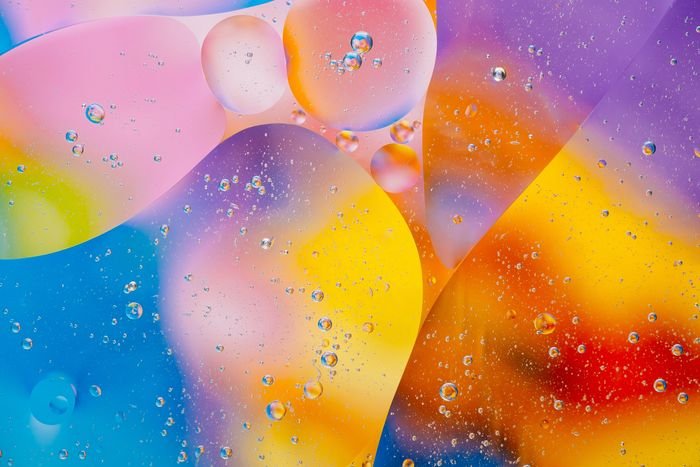

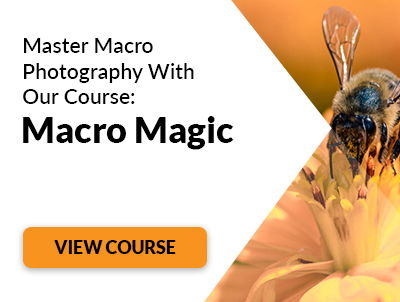

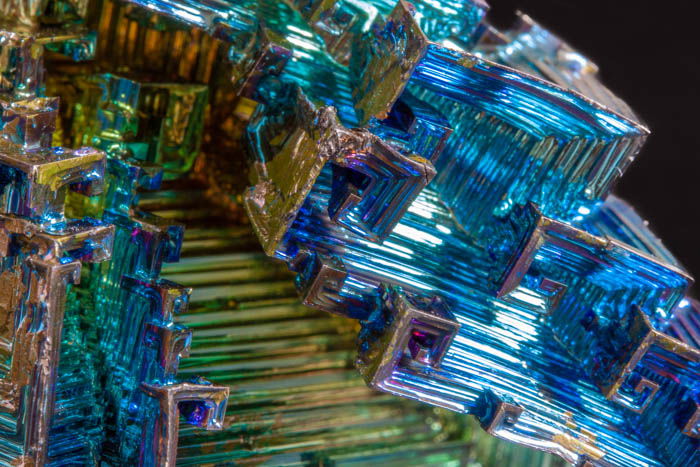

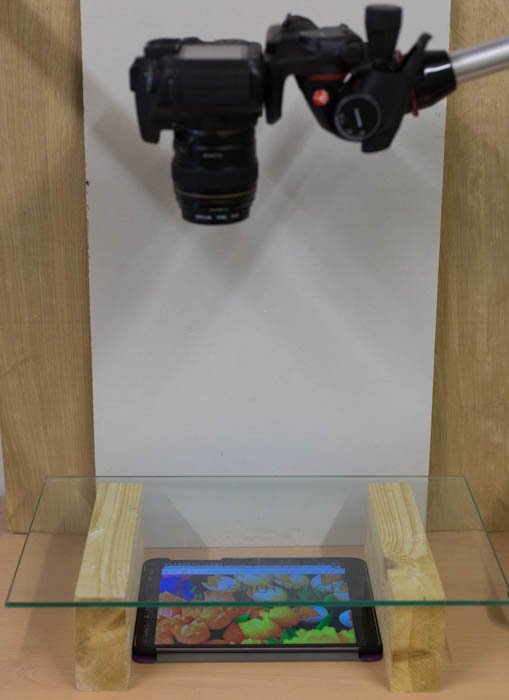
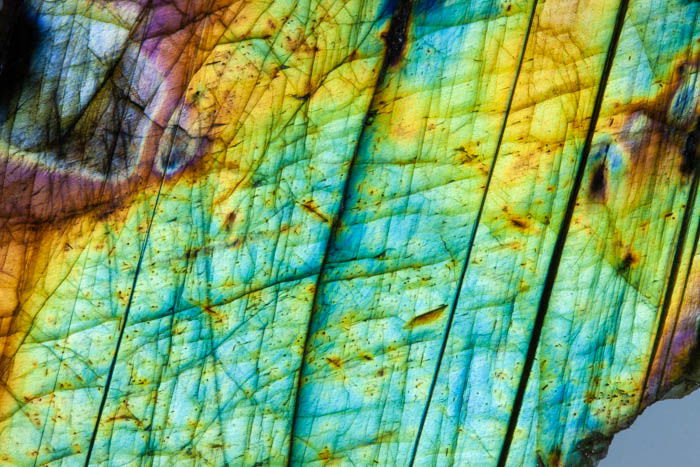


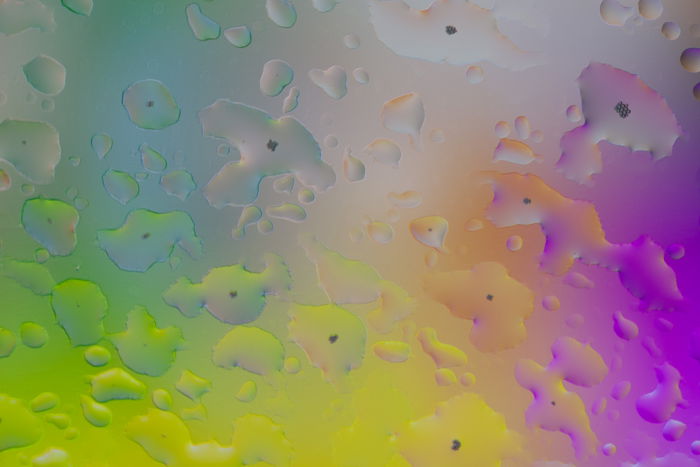
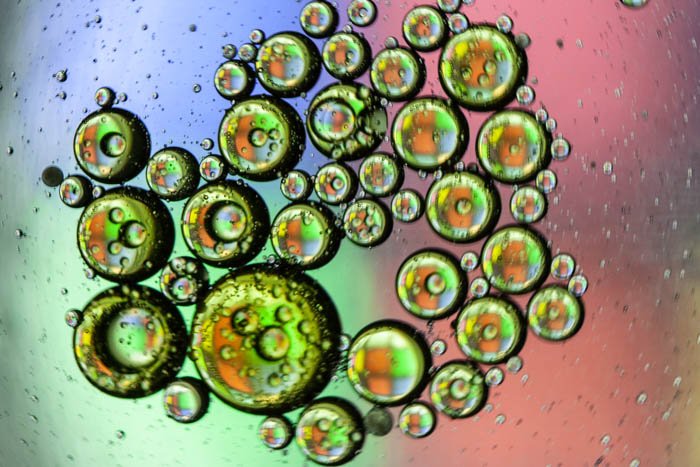
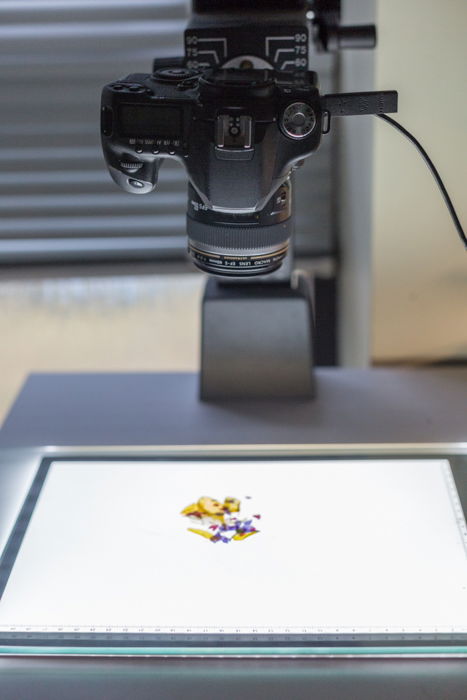
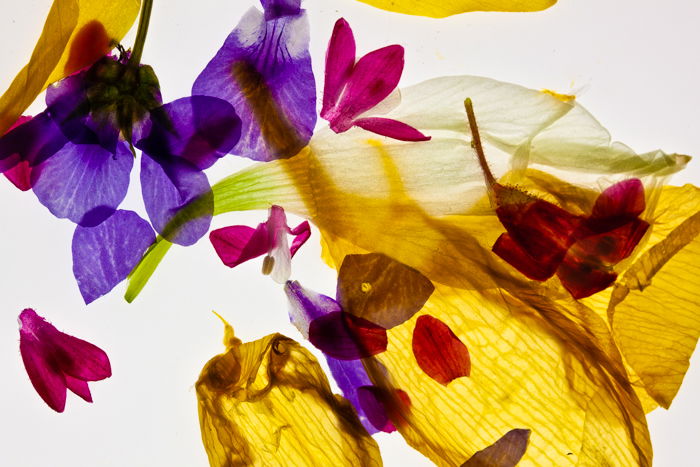

title: “5 Abstract Macro Photography Ideas To Get Creative With” ShowToc: true date: “2022-12-31” author: “George Foret”
Such images exploit the use of patterns and colors. They arrest the eye and invite the viewer to explore the image for its own sake. [Note: ExpertPhotography is supported by readers. Product links on ExpertPhotography are referral links. If you use one of these and buy something, we make a little bit of money. Need more info? See how it all works here.]
What Is Abstract Macro Photography?
Occasionally, you’ll hear the term ‘abstract‘ applied to a photo that’s turned out very badly. But for the most part, photographers deliberately shoot abstracts. You can, of course, create an abstract image entirely on your computer. All you need for this is a creative software like Photoshop. But starting from a blank canvas can be difficult unless you receive a spark of inspiration. For this reason, it’s often helpful to begin with a real-world subject. And then photograph it in an unusual way. You can find inspiration for abstract photos almost anywhere. You can, for example, find repeating patterns and colors in large man-made structures. But many smaller-scale objects can also provide a wealth of intricate shapes and textures. For many of us, these are less familiar and therefore, more ‘abstract’.
How to Shoot Macro for Incredible Results
Most people are not in the habit of closely examining objects with a magnifying glass. Therefore, close-up photographs of everyday objects can easily create interesting abstract compositions. The trick is to get close enough to the subject. Make its image on the sensor big enough to be useful. Let’s say you try to move in close to a small subject using a standard lens. You’ll find that as you get closer, you’ll reach a point where you’re no longer able to focus on the subject. If you want a sharply focused image as the basis of your abstract composition, this would be a problem. Except, this time, we are trying to create abstract results. So it’s worth trying to photograph some objects up-close without worrying about the lack of focus. This can generate some abstract images whose nebulous forms emphasize the subject’s colors. Remember to set your lens to manual focus. Your camera might otherwise refuse to take the photo on account of it being unable to achieve focus. To see both color and texture, you will need to be able to reach much closer to the subject. This is closer than the normal minimum focusing distance. But don’t worry, there are several ways to do this. Some techniques are outlined in our article on macro, micro, and close-up photography. But out of the various methods available, the use of a dedicated macro lens gives the best results. And the addition of extension tubes will increase the available magnification even further. Here’s a shot of the previously out-of-focus subject. This time, I used a relatively inexpensive EF-S 60mm USM f/2.8 macro lens with a Canon 50D. At about the same distance, the intricate form of its crystalline structure can be fully appreciated. The photo above is an image of the chemical element bismuth. It’s a heavy metal with a low melting point. Bismuth can easily be crystallized to produce some fascinating terraces of iridescent color. Bismuth crystals are easy to photograph as they are quite large. This sample is, in reality, about one inch across. You don’t need a high magnification or a complicated lighting setup. You can easily find bismuth online or at any gem and mineral show. Many minerals exhibit different patterns and colors depending on the angle of the illumination. Here are two images of labradorite. The first is lit from behind using an LED light panel. The second from the front using an LED ring light. The following image is from a specimen of polished Labradorite. It’s lit with a simple LED light, hand-held to achieve a burst of iridescence at the critical angle.
More Abstract Macro Photography Ideas
Not everyone has a lump of bismuth or a piece of labradorite on their mantlepiece. But there are plenty of household objects you can use to make colorful macro images. The colors we’ve seen so far are not generated by dyes or pigments. They come from oxide layers that have a similar thickness to the wavelength of visible light. This creates an interference effect that selects vivid spectral colors from the white light. It’s what creates the colors in a butterfly wing for example.
Recycle an Old CD for Awesome Effects
The microscopic pits on a CD are also comparable in size to the wavelength of visible light. This makes it another source of abstract spectral color. All you need besides your camera is a tripod and almost any small white light source. Take this image for example. I placed a few drops of water on a CD and used an LED ring light as the illumination source. I mounted the camera on a tripod and moved the light by hand to achieve a good burst of color.
Experiment with Back-Lit Drops
A fairly common technique is to photograph either oil or water on a sheet of glass. This time, the background provides the colors. I’ve placed it several inches behind the glass so that it’s thrown out-of-focus. Usually, the background comprises a collection of colorful objects. These are lit by either flash or some continuous light source. We’re only using this to provide some diffuse color, so let’s keep it simple. Instead of lighting the background, make the background the light source itself. I’m sure most of you have a tablet computer, either an iPad or an Android pad. Simply select a colorful photo on the tablet. Lie it face-up on a flat surface and set up a glass plate a few inches above it. Then drop some water or oil drops onto the surface of the glass and take some macro photos of the drops. You can easily move your background photo around on the pad to achieve the background colors you want.
Add Oil Drops in the Mix
There’s an even more exciting technique you can try. Instead of pouring water directly on the glass, try placing a glass dish on it and adding a mixture of water and oil. Make sure the oil forms isolated drops on the water surface. Each drop forms a tiny lens that distorts the background image to make abstract images.
Shoot Abstract Flower Photography
Most macro flower photography involves taking fairly standard images of the petals and stamens of flowers. And it might include an attendant insect or two. Lighting can be a challenge. The camera often blocks some natural light as the macro lens gets really close to the subject. The high magnification and shallow depth-of-field often require you use fast shutter speeds and a small aperture. This often forces photographers to use specialized flash equipment such as a twin-head macro system. Dedicated macro flashguns are not cheap. If you’re just starting to explore macro photography, there are other ways to take macro photos of flowers. Especially if you want a more abstract result. One simple way to shoot abstract macro flower photography without expensive equipment is to use a relatively inexpensive LED light pad. An A4 size light pad will provide a clean white light source that’s really versatile.
Don’t press your tablet into service as a white light source. You’ll see red, green, and blue pixels instead of a plain white screen. For this image below, I sandwiched some petals between a glass plate and the illuminating LED panel. This is a very simple type of macro photography. The illumination is adequate, the subject isn’t moving and there is no real depth-of-field problem. Everything is sharp and in-focus. Once you have this setup in place, try photographing other objects, too. Thin slices of fruit and vegetables like orange or cucumber will do the trick.
Use Kitchen Utensils
The average kitchen has a variety of gadgets and utensils. It may sound as a surprise, but you can use them for your abstract macro photography project. Some of these gadgets have interesting shapes and shiny surfaces, which make them perfect subjects. Try using the tablet computer trick to provide some colored reflections as in this cheese grater.
Conclusion
These ideas are just some of the many you have yet to discover! Once you get into the abstract macro way of thinking, you’ll begin to see new artwork all around you. Macro photography is one of the topics we cover in our creative photography course, Wow Factor Photography. If you’d like to learn more, check out the course here.














